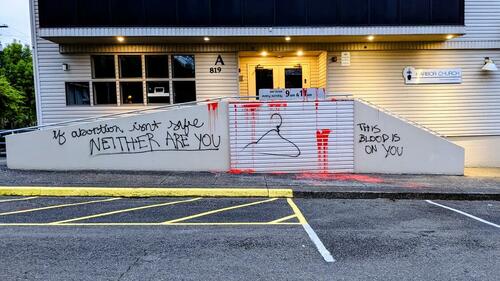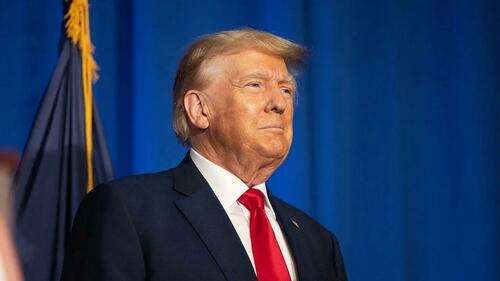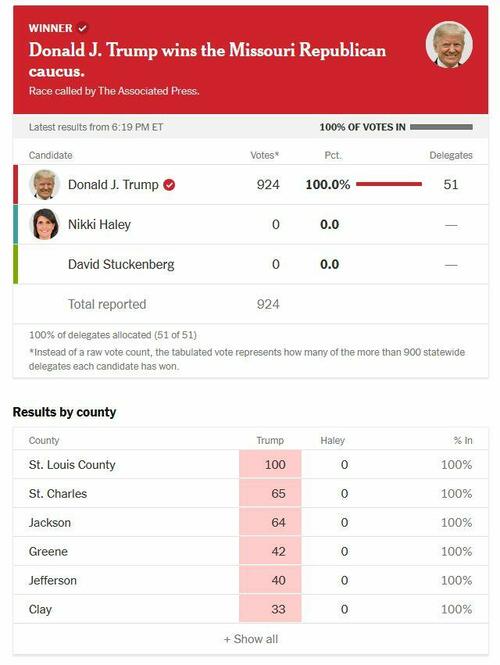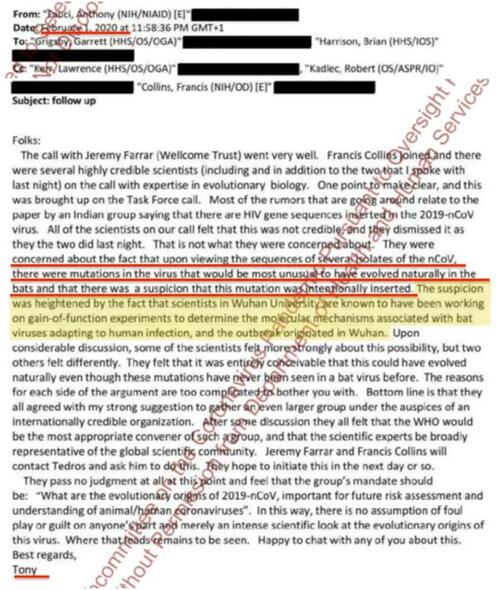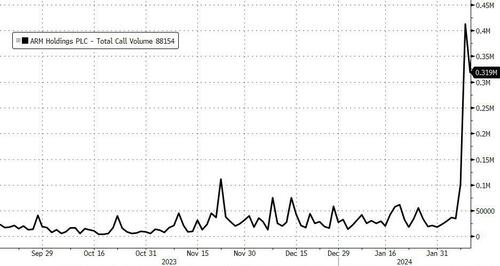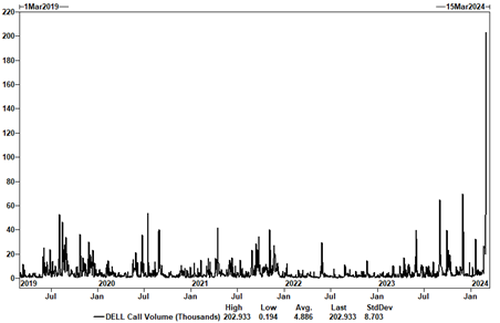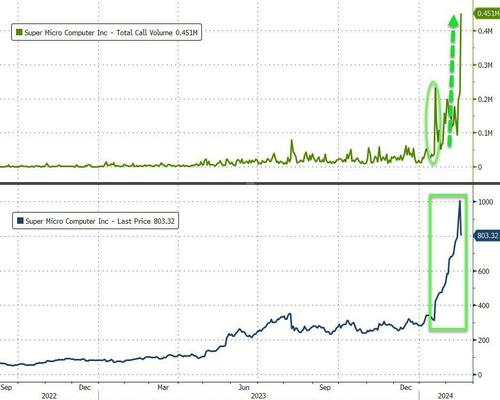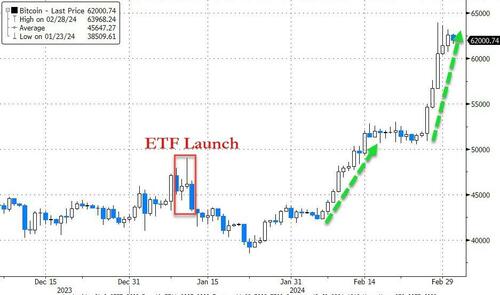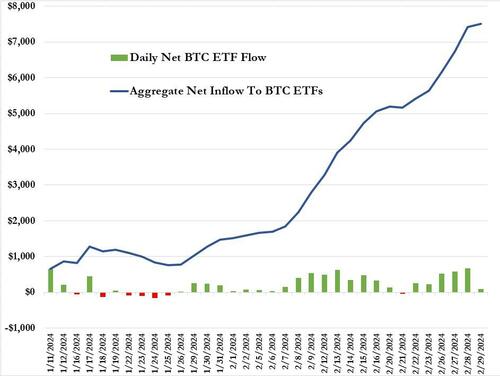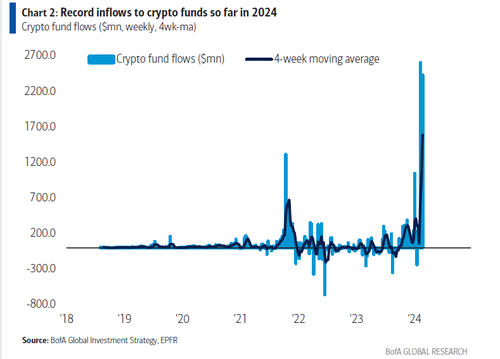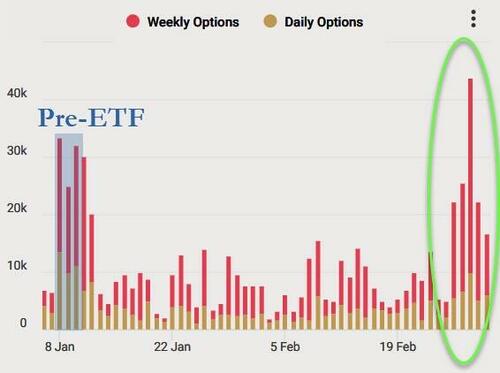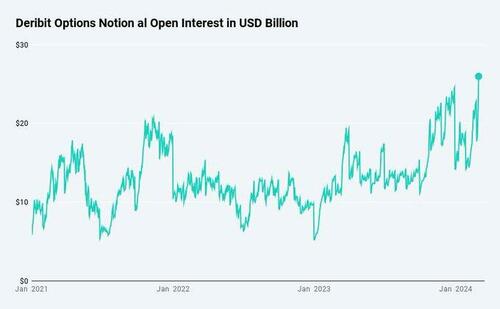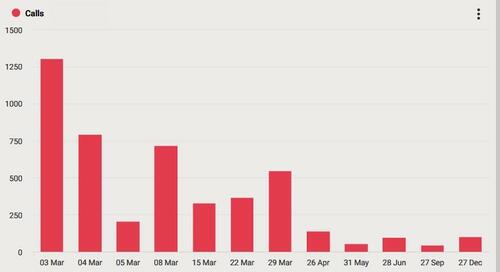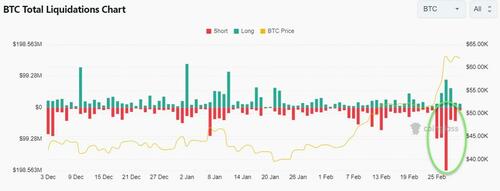The Endgame, Part I: The Russo-Ukrainian War And Geopolitics Of Europe
In early February, I posted a poll on X asking whether I should write a geopolitical piece on the Russo-Ukrainian war, adding to my series mapping a worst-case scenario for the war. While the vote count for this particular poll was not very high, an overwhelming majority supported this notion.
Before conducting the poll, developments in Ukraine in December and January had led me to ponder the outcome, or endgame, of the war. In September 2022, I had established an alternative to the western narrative of the war, spewed relentlessly by our media. In it, I argued that
-
Ukrainian losses are massive, passing Russian losses possibly 5-10 times.
-
The Russian army has not collapsed, but it may have become the strongest it has been since WWII.
-
The West (NATO) is fighting a proxy-war in Ukraine with the possible aim of regime change in Russia.
-
Russia is about to create a war-machine not seen in Europe for a very long time, which it could use to unleash a devastating attack against Ukrainian (NATO) forces during the winter.
In late-October 2022, I also noted that:
The massive force Russia is amassing and the all-but-halted progress of Ukrainian forces, tells me that we are most likely approaching a turning point in the war. In the worst case, this implies that Ukraine has already lost. Even in the best case (excluding peace) this means that the war will drag on and become a resource race between NATO and Russia.
Now, essentially all of this, except the Russian winter-offensive (2022/23) have been proven true. Ukraine has effectively lost the war, or a least she cannot win it in any plausible scenario. Just a few days ago, French President Emmanuel Macron attempted a game-changer, by “not ruling out” NATO boots in Ukraine. This, unsurprisingly, led to a strong backlash both from European allies and the Kremlin, but the idea of direct NATO involvement in Ukraine had been floated. Yet, we already know that western soldiers have been in Ukraine for some time and now we also know that NATO has been providing both operational and intelligence support for Ukraine for some time.
Anyone who understands anything about the ‘power politics’ in Europe knows that radical new developments will be first proposed by some party/parties only to be shot down by other political leaders. However, after this initiation, the proposal keeps appearing in newspaper articles and comments by political leaders, which slowly turn from condemnation to neutrality and further to (reluctant) acceptance. This is why all of us concerned about pan-European security should be extremely vigilant concerning the plans of European political leaders and the elite. The analysis presented in this piece further amplify these concerns by showing that the motives of NATO in the Ukrainian conflict are unlikely to be benevolent for the European populace.
The timing of the comment by Macron, was naturally no coincidence. The AFU (Armed Forces of Ukraine) is currently facing a looming collapse of the eastern front. A key development was the fall of Avdiivka, a key town in the east, to Russians in mid-February. It now looks as though the AFU has no fortified positions after Avdiivka, which implies that the whole Ukrainian defenses can collapse in a matter of weeks.
The questions we should be asking are as follows: Why are we here again, on the verge of another major war in Europe? Why has the narrative of the North Atlantic Treaty Organization, or NATO, changed so drastically from the first days of the war?
We have learned that western nations, especially the U.S. and the U.K., have been adamantly against any ceasefire, not to mention peace, in Ukraine. From the perspective of the geopolitical security structure, based on integration, created in Europe after the Second World War, this makes absolutely no sense.
Blaming only Russia for the war in Ukraine, would also be extremely naive. The actions of the U.S. in Ukraine before the onset of the first phase of the war, in 2014, do not stand up to any scrutiny. Also those, who consider Russia as a “white knight” in this macabre power play, are clinging on to beliefs that are not supported by reality. The longstanding, publicly stated position of neutrality of Russia in the conflict in Donbas, since 2014, is a blatant lie from the Kremlin. I know this, e.g. through my contacts in the operational leadership of the OSCE (Organization for Security and Co-operation in Europe) mission in eastern Ukraine. But, this is just how these two major nuclear powers play this game. You just have to be careful to not blindly believe what either of the party argues.
Yet, the decisions and actions, or “errors”, NATO has made in the Russia-Ukraine war, can only be plausibly explained with two scenarios. The first one is that NATO leadership is highly erratic, while the other is that NATO is not an “defense alliance”, but an aggressor. Both of these have dire implications for the security structure of Europe.
Russian threat that wasn’t
Sir Winston Churchill described Russia as a “riddle wrapped in a mystery, inside of an enigma”. This is how Russia presents itself to many westerners. The relatively chaotic, but mostly victorious military history of Russia conceals their centuries long aim of bezopasnost, which translates to “absence of threat”. The Napoleonic wars, which led to the Fire of Moscow, and Operation Barbarossa, one of most bloody wars of invasion ever fought in Europe, have been burned deeply into the psyche of Russian leaders. For a very long time, the threat to Russia has come from the west and from the south-west. Both Hitler and Napoleon proceeded to Russia through Poland and Ukraine. This is something that the collective west often and most likely deliberately forgets.
On the other hand, the wars of invasion fought by Russia, and the Soviet Union, combined with their extensive ‘psyop’ operations in the West (conducted mostly by the Soviet Union), can be seen as an over-reach of security or direct policies of enlargement. However, also this is how major military powers operate, when they feel their security and/or interests threatened. The wars fought by Russia and the U.S. over the centuries, shows their power politics rather clearly. The difference between the two is that, while Russia has mostly fought wars close to its borders, the U.S. has waged wars, practically, across the globe.
What is also deliberately forgotten in the west is that Russia is not the Soviet Union. The Soviet Union was a superpower with the capacity to conquer and hold most of Europe. For decades, it was the second largest economy in the world, the winner of the first stage of the space race and a military giant. Russia’s economy, on the other hand, is eleventh largest in the world with a gross domestic product of $2.1 trillion in 2023, which is less than one-tenth of the U.S. economy ($26.9 trillion). The states of California and Texas, for example, have larger economies than Russia.
This quite simply means that, while Russia currently most likely leads NATO in development of modern ground forces, the economy of Russia simply cannot cope with any larger wars of invasion. The costs of the annexation of Crimea to Russia’s fiscal balance were staggering. The economic foundations, like tourism and private businesses, on the Peninsula collapsed and Russia emptied her Sovereign Reserve Fund to pay for the costs of annexation. The second military phase of the conflict has more than halved the National Wealth Fund, with its value falling by $58 billion since February 2022.
What do you think would happen, if Russia would invade, for example, the Baltics? Russian state finances would collapse without massive lending (money printing) from the Central Bank of the Russian Federation, which would bring another round of hyperinflation.
Purely from economic premises, the idea of Russia engaging in a war of invasion in Europe is preposterous! A wider war against NATO would utterly devastate Russian state finances, with a very high risk of devastating nuclear confrontation. This means that the Kremlin would not take upon such an endeavour, even if it were militarily possible (which it is not, at least not yet), without a direct threat to the survival of Russia. What could bring upon a such a threat?
The two faces of NATO
In January last year, I went through the uneasy relationship and rather aggressive history of NATO and Russia. The conclusion of my analysis was:
The history of NATO, the lack of genuine push for peace from the West, and the current extremely dangerous rhetoric demanding for “full Russian capitulation” and the change in regime in Moscow, makes me think that the threat Kremlin feels has roots in reality. It seems more and more that the U.S. and NATO are using Europe to wage a war against her opponent for 80 years. The Eurasian power structure forming between Europe, China and Russia would have risen to challenge the U.S. hegemony, and this can be seen as the motive for such a worst-case scenario.
This was a rough conclusion, but it was based on analyses of three leading geopolitical scholars (two American, one Russian). There was also one thing all geopolitical scholars, Russian and American (NATO-hawks and doves), agreed upon in the 1990’s and 2000’s. It was that Ukraine was a ‘no-go-zone’ for NATO. How and why did NATO then deliberately flirt with the idea of Ukraine becoming a member of NATO already in 2008? Moreover, the General Secretary of NATO, Jens Stoltenberg, has given truly strange statements lately, including the statement that Ukraine would eventually become a member of NATO. This would violate all the principles and rules of how the alliance accepts new countries.
The main problem with NATO is that it seems to have a mind of its own. It does not follow the guidance of its member states, nor even advice of the most notorious ‘NATO-hawks’, like Dr. Zbigniew Brzezinski. Moreover, while no formal agreement was ever signed to stop NATO from expanding to former Soviet countries in eastern Europe, there were verbal agreements and statements of such a ‘moratoria’. It’s difficult to assess, how much weight the Kremlin originally put to such promises, but according to the statements by President Putin they were not negligible. Even as late as in early-December 2021, President Putin demanded guarantees that NATO would not expand eastward any further. This can be seen as a last-minute effort to prevent a wider conflict in Ukraine.
Alas, it appears that NATO operates with two faces. Publicly it’s a defense alliance, responding to the threat of Russia. Yet in the background, it is sowing the seeds of conflict, and flaming them by deliberately over-stepping the red lines of its main rival, Moscow. This leads us to the first scenario, i.e. to erratic NATO.
Scenario I: NATO, the erratic
The North Atlantic Treaty was signed on April 4, 1949 (which happens to be the same day when Finland ascended to full membership to the alliance, in 2023) between the United States, Canada, Belgium, Denmark, France, Iceland, Italy, Luxembourg, the Netherlands, Norway, Portugal, and the United Kingdom. In it, they agreed to consider an “attack against one an attack against all, along with consultations about threats and defense matters”. Moreover, the collective defense arrangement only applied to attacks against the signatories that occurred in Europe or North America and not, for example, to conflicts in colonial territories.
This was the original aim of NATO. That is, to form a collective defense alliance between countries. It was naturally not the first of its kind in history, but it became the strongest one. The Soviet Union and its allies responded by forming the Warsaw Pact on 14 May, 1955.
All through the Cold War, NATO acted honoring its original aim. It provided a credible counter-force to the military threat of the Soviet Union and the Warsaw Pact. However, after the collapse of the Soviet Union and the dismantling of the Warsaw Pact on 25 February, 1991, NATO remained. Why?
NATO started to take part or to lead military missions across the globe in the 1990’s. At the same time NATO expanded eastwards with most of the eastern European countries joining the alliance between 1997 and 2020. This did not go unnoticed in the Kremlin, which drew definite red lines for the expansion in 2008. Alexander Grushko, Russia’s former deputy foreign minister stated in 2008 that, “Georgia’s and Ukraine’s membership into the alliance is a huge strategic mistake which would have the most serious consequences for pan-European security”. One Russian newspaper reported that, when Presidents Putin and Bush met, Putin stated that, “if Ukraine was accepted into NATO, it would cease to exist”. These were extremely dire warnings that Ukraine was an integral part of the bezopasnost, a definite red line for Moscow. To emphasize the point, Russia invaded parts of Georgia in August 2008, after the idea of Georgia becoming a member in NATO was floated in 20th NATO Summit, held in Budapest between 2-4 April 2008 (there’s also controversy surrounding who started the war). Yet, every single one of those warnings was neglected by the leadership of NATO.
To believe that the NATO leadership is simply erratic in their decisions, in the sense that they are deliberately over-stepping the red lines of Kremlin, requires that there exists a massive deficit by recent leaders of NATO to understand the communications coming from Moscow. These deficits would need to be so massive that believing in this scenario would require questioning the sanity of NATO leadership, because they are effectively over-stepping the red lines of a country with the largest stockpile of nuclear weapons.
I cannot believe in such a scenario of insanity, which leads us to the other scenario. That is, that NATO has evolved into something very different that it was in the beginning.
Scenario II: NATO, the aggressor
NATO is effectively run by the U.S., which covers some 22% of its budget. The U.S. also played a major role in the formation of its first ever military structure. By also being the largest nuclear power in the alliance, the U.S. can be seen wielding uncontested power in NATO’s decision making process. The rather strange occurrence of escalations in Ukraine under democratic rules in the U.S. (Obama and Biden) can be seen either as a weakness of leadership which President Putin took advantage of, or as weakness exploited by the “Deep State”. The aggressive stance taken by NATO in Ukraine, a non-member country, hints to the latter.
Deep state is often described as a conspiracy theory, where secret government networks collude to steer the politics of a state. However, a more plausible description for the term is a network of civil servants, guiding political leaders possibly for decades, who have formed their own view of how things should be handled. Some could describe this as a culture of governance. The thing with such networks is that, if they are subjected to a weak leader, the networks can start to run things, that is, to control decisions. The larger the network, the more extensive its power. There’s a very telling piece on this “power vacuum” a national leader faces, by no other than President Barack Obama.
Every single human institution is also prone to corruption. This is often related to the nature of the power the network yields. If it, for example, has the ability to decide the fate of nations, we can expect corruption to become rather pervasive, if the power of the network goes unchecked. This tends to happen, if it has a weak leader, that is, when the network observes that the commander-in-chief does not have the capacity to properly digest and analyze their guidance, but just act upon them. At this point, there usually is a ‘silent revolution’, where the true decision making process, of any organization, is taken over by the network. Moreover, in such cases the immovable minority, consisting of intolerant and unyielding people, is likely to take over. In positions of power such minorities tend to exhibit meanness reaching even a psychopatic level. The immovable minority may also consist of people, who have devoted themselves to a certain cause or the cause of their background organizations. There’s no lack of secretive organizations running their own agendas in our societies, on which Freemasons are probably the most well known.
In any case, the mental and physical state of the current leader of the U.S., President Joe Biden, has raised some serious questions. I was shocked to see how fragile he has become, when I watched his press conference, first time in a year, some weeks ago. He seems like an old man that should be in a retirement home. I have no doubt that he’s no longer in charge, but his team and the Deep State are.
This leads us to the question, what is the Deep State pursuing?
Answering this question is naturally possible only through indirect observations. If we observe all the “erratic” decisions and actions by NATO for the past 30 years, it’s hard to conclude anything else than that the Deep State seeks a direct confrontation with Russia. What could be the catalyst for this?
Russia holds vast mineral resources, estimated to total between $75 to $90 trillion. In a sense, this makes Russia the richest country in the world. After the fall of the Soviet Union, Russia sought funds from everywhere, and was very open to investments. It could be that the Deep State hopes to accomplish the same if the current Russian administration collapses, but this is a very high risk strategy.
The other likely motivation for the Russia-Ukraine war is to destroy the Eurasian alliance that was forming between China, Europe and the U.S. However, this already lies in ruins, but the aim could be to hold up the tensions so that there could be no detente between Europe and Russia/China. This requires that the war in Ukraine continues and even spreads. Peace would be very risky to this scenario, as Europe could be seeking to re-establish relations with Russia due to its importance, e.g. to European energy security. Peace at this point would also be a heavy blow to the credibility of the U.S. military power.
The third possible source of motivation is rather speculative. I have speculated on the possibility that the global elite, and a powerful group behind (or over) them is sowing their own dark plan for Europe and the world. This group could be assumed to have a strong influence on the Deep State in all major countries. Their agenda would likely consist of inflicting ultimate chaos in the world in order to establish a pervasive control mechanism. World War III, even with the risk of nuclear annihilation, could serve such an agenda.
Regardless of which of the two scenarios the current NATO leadership is following, the implications for Europe and the world are dire. This is because they both point to deepening escalation. This implies that we have entered the most dangerous period of European history since the late 1930’s.
I will publish scenarios for the endgame of Russia-Ukrainian war in the coming weeks.
Tyler Durden
Sun, 03/03/2024 – 07:00
via ZeroHedge News https://ift.tt/Wvrb2eS Tyler Durden





